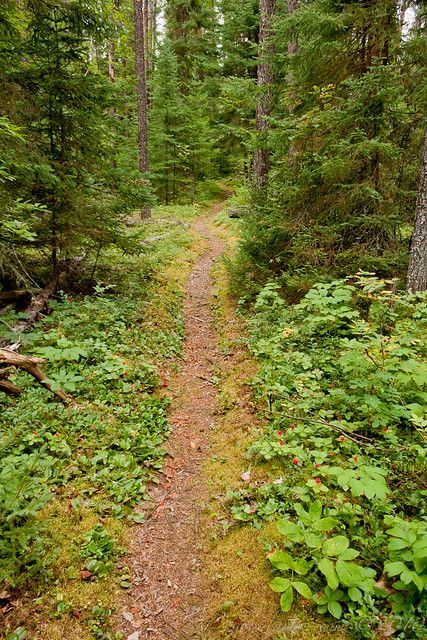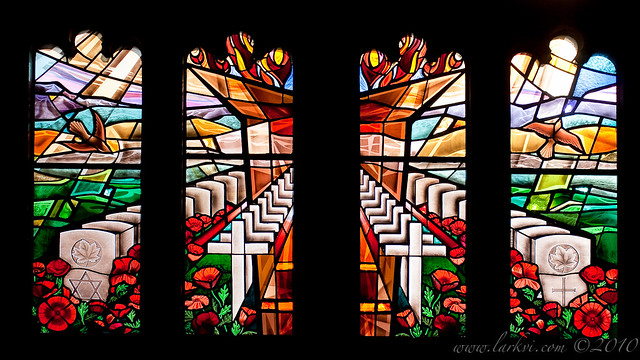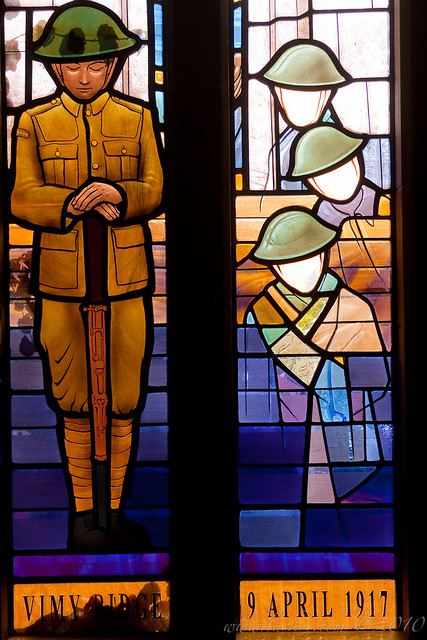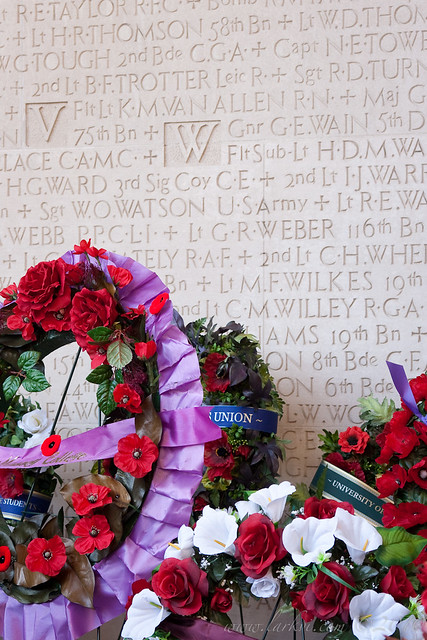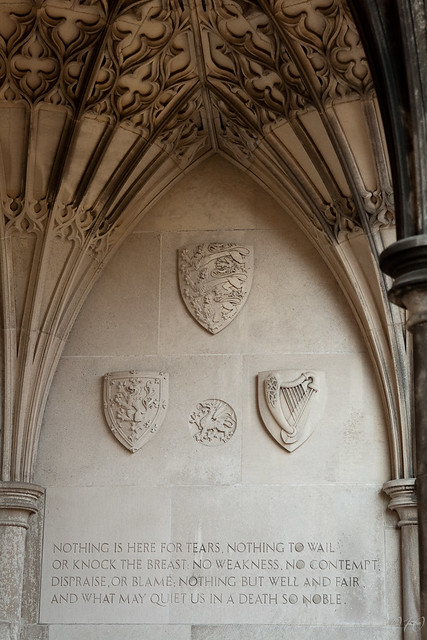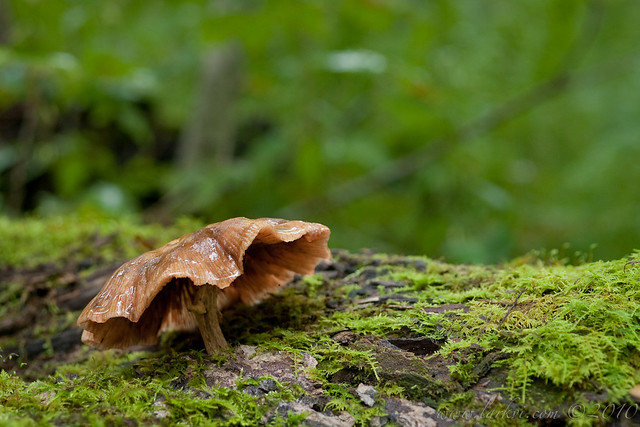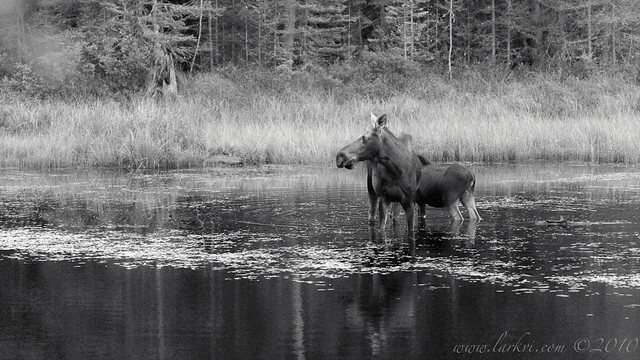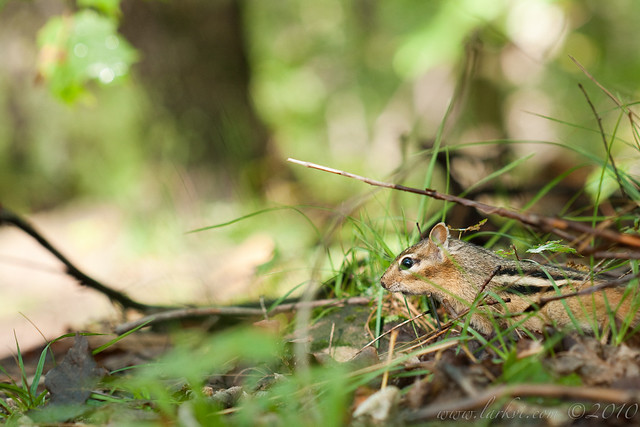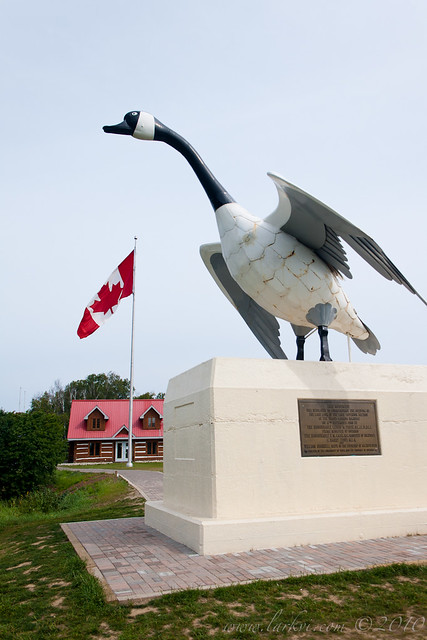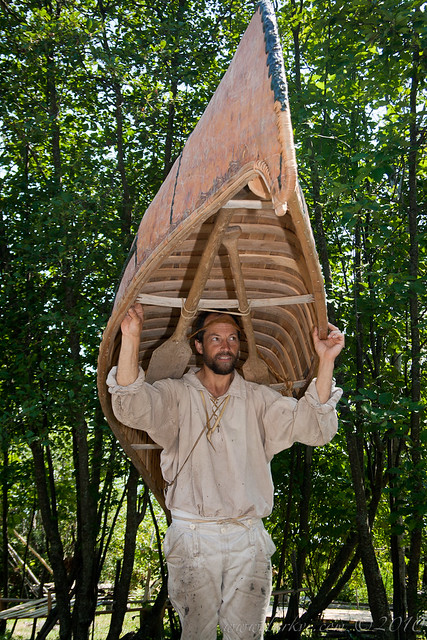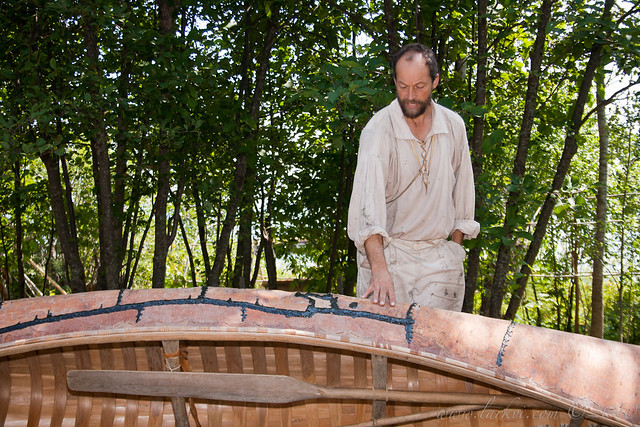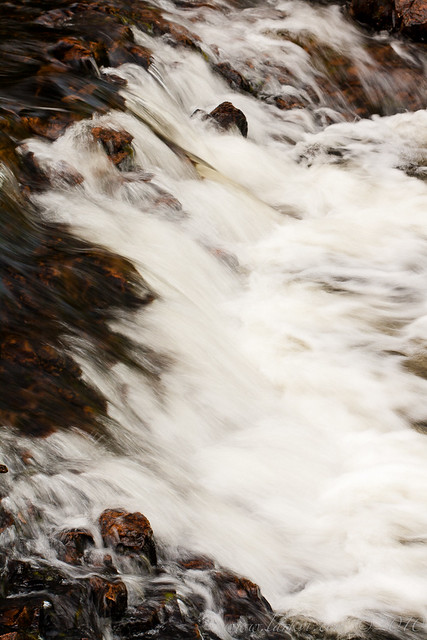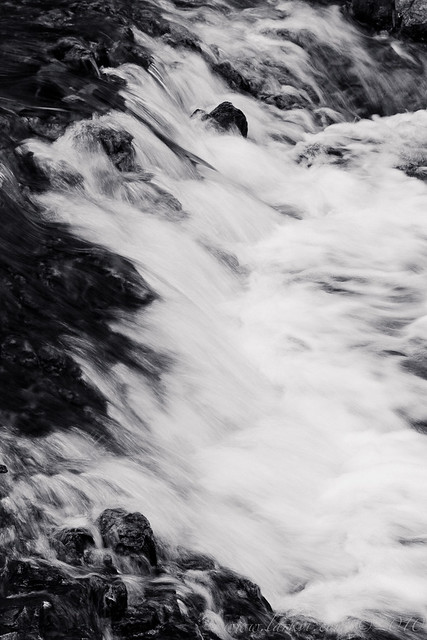A quiet early morning walk through the woods of Northern Ontario, back in the Summer.
Stained Glass, Soldiers’ Tower, University of Toronto, Remembrance Day, 2010
The stained glass windows in the Memorial Room of Soldiers’ Tower, built to honor the memory of the 1,185 members of the University of Toronto who gave their life in the First World War, and expanded to honor those who fell in the Second. Symbolizing the sacrifice, and memorializing the honoured dead, the windows are based upon the famous poem by University of Toronto Alumnus Lt. Col. John McCrae, “In Flanders Fields”:
In Flanders fields the poppies blow Between the crosses, row on row, That mark our place; and in the sky The larks, still bravely singing, fly Scarce heard amid the guns below. We are the Dead. Short days ago We lived, felt dawn, saw sunset glow, Loved and were loved, and now we lie, In Flanders fields. Take up our quarrel with the foe: To you from failing hands we throw The torch; be yours to hold it high. If ye break faith with us who die We shall not sleep, though poppies grow In Flanders fields.
This window memorializes the dead of the Battle of Vimy Ridge, the first time all four units of the Canadian Expeditionary Force fought together, suffering heavy losses and, according to some, birthing a national, Canadian, identity.
Wreaths and Names, University of Toronto, Remembrance Day, 2010
Wreaths from various colleges and university organizations are laid before the wall upon which the names of members of University of Toronto who died in the First World War, on Rememberance Day, 2010.
The inscription on the wall wherein are inscribed the names of members of the University of Toronto who fell in the First World War. The shields are the national arms of the monarch of Canada and the United Kingdom, representing England, Scotland, Ireland, and Wales (dragon, centre). The quote is Milton, Samson Agonistes, 1721–4.
Mushroom, Algonquin Provincial Park, Ontario, Canada 2010
Moose, Algonquin Provincial Park, Ontario, Canada 2010
Just as the light was fading, we came across this cow and calf alongside the track portion of the Track and Tower trail, causing a stop that meant we had to make the last of the trip in the dark. The light was almost gone, the rain slanted into the lens of the camera, so I was not able to get the quality of photos I would have liked, but it was wonderful to see the moose in such a natural habitat, and at such a reasonable distance.
Chipmunk, Algonquin Provincial Park, Ontario, Canada, 2010
Wawa Goose, Wawa, Ontario, 2010
There’s this giant metal goose in Wawa, Ontario, which is in fact the town’s major claim to fame, as said goose is apparently famous in Canada (you’ll just have to take my word on this one). Theoreticallly, the goose commemorates the completion of the Trans-Canada highway, but the real reason behind it was to have some big thing to actually make tourists care to come to Wawa. It has worked–somewhat. THe goose is really on the edge of Wawa, so you don’t need to go into town to visit it, and I am not sure what percentage do or don’t. But there it is: big goose in Wawa–stop by if you’re in the neighbourhood. You can even donate for the replacement, as this goose is apparently cooked. . .
Interpreter, Grand Portage National Monument, Minnesota
This historic interpreter at the Grand Portage National Monument (the site where traders met to send furs, especially beaver, from all over the West back to Montreal) makes and paddles his own traditionally-made birchbark canoes (and has even canoed/portaged for 1000 miles in one). If you are in the neighborhood of Grand Portage, he gives and excellent presentation, and is very interesting to talk to (he seems very committed to the era, and even lives in the bush).

